

Let’s change our view on these “weeds” that, in addition to being beautiful, clearly have many benefits. Don’t get rid of them, they prove to be very useful!
→ Also read:
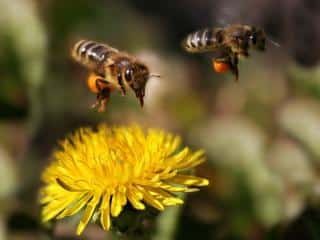 “The war on dandelion is pointless,” declares gardener-columnist Franck Prost at the Jardins en Seine exhibit. “Leave them alone!”, concurs landscaper Jean-Marc Jodogne.
“The war on dandelion is pointless,” declares gardener-columnist Franck Prost at the Jardins en Seine exhibit. “Leave them alone!”, concurs landscaper Jean-Marc Jodogne.
These “lion’s teeth” are indeed a precious aid for bee survival and that of other pollinating insects. It provides an abundance of food at the start of spring. They are also edible for us humans: in salad, jam, sautéed, infusions…
Nothing goes to waste in the dandelion: flower, leaf, and root! For beauty, you can treat yourself to a dandelion bath, pouring a whole plant decoction into the bathing water… It is beneficial for skin and for detoxifying the body.
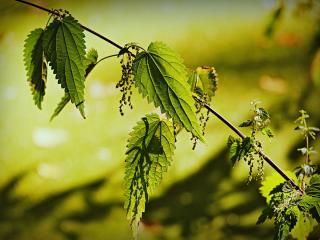 Equally valuable for humans and the garden, nettle is really a plant to (re)discover! You can learn to pick it with bare hands and munch on it raw, but you can also cook it in various ways. Nettle is a particularly nutritious wild plant, with high mineral content and energizing. It’s excellent to enjoy raw, cooked, in juice and for tea. It’s also good food for chickens.
Equally valuable for humans and the garden, nettle is really a plant to (re)discover! You can learn to pick it with bare hands and munch on it raw, but you can also cook it in various ways. Nettle is a particularly nutritious wild plant, with high mineral content and energizing. It’s excellent to enjoy raw, cooked, in juice and for tea. It’s also good food for chickens.
In a garden, nettle is a blessing for butterflies. It’s also a great compost activator, a natural fertilizer where it grows spontaneously, and above all, the star ingredient of yet unmatched nettle manure. Just that? Nope: believe it or not, the stem can be used to make paper and fabric!
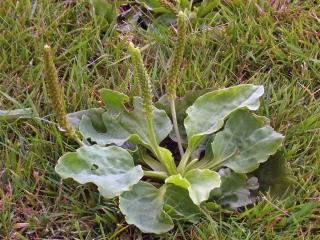 Your kids might shoot its buds like a little plant-made bow! Did you know that these same floral buds are edible? In early spring, their taste resembles that of mushrooms. This weed’s young leaves can be enjoyed in salads or sautéed.
Your kids might shoot its buds like a little plant-made bow! Did you know that these same floral buds are edible? In early spring, their taste resembles that of mushrooms. This weed’s young leaves can be enjoyed in salads or sautéed.
While all plantains are edible, those in your garden might be too bitter. In that case, sow ‘Deer Horn’ plantain, the tastiest one.
Plantain also has medicinal virtues: as a poultice, the sap of its leaves soothes burns, stings, and other small injuries; in infusion, it treats respiratory ailments.
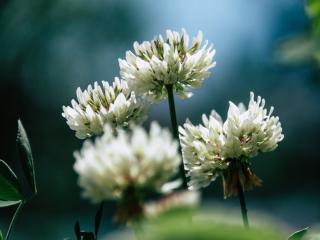 Its white or red flowers offer a feast for biodiversity: a major source of nutrients for butterfly caterpillars, bees, and bumblebees…
Its white or red flowers offer a feast for biodiversity: a major source of nutrients for butterfly caterpillars, bees, and bumblebees…
For us, drunk as tea, red clover is a diuretic and a cough suppressant; it contains trace elements and vitamins.
In the garden, white clover is also a first-class green manure… And it remains very ornamental in a lawn!
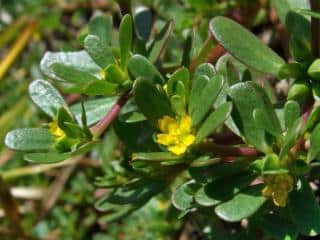 This creeping plant, common in Mediterranean gardens, turns out to be a staple food of the famed Cretan diet!
This creeping plant, common in Mediterranean gardens, turns out to be a staple food of the famed Cretan diet!
Very rich in omega-3, purslane is indeed excellent for the heart and it helps cleanse the body: consume it in salads or stir-fried.
Like clover, it is an interesting ground cover… and even just a pretty plant to grow in a pot! Sow from March to September.
Claire Lelong-Lehoang